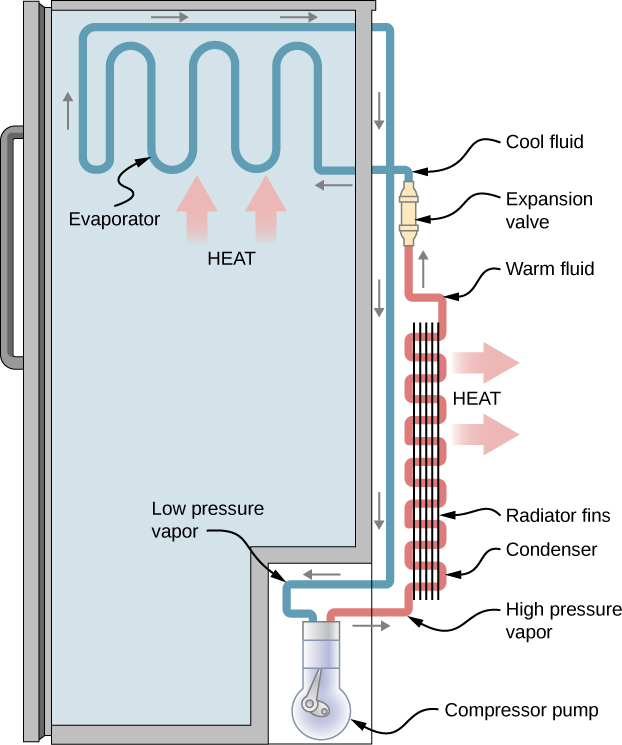

In parallel-flow heat exchangers, the two fluids enter the exchanger at the same end, and travel in parallel to one another to the other side. There are three primary classifications of heat exchangers according to their flow arrangement. 3: Shell and tube heat exchanger, 2-pass shell side, 2-pass tube side (2-2 countercurrent)

The cycle of an ideal gas Carnot refrigerator is represented by the pV diagram of (Figure). This too is a consequence of the second law of thermodynamics shown earlier.

Also, as you might expect, all real engines operating between two reservoirs are less efficient than reversible engines operating between the same two reservoirs. This leads us to ask: Do all reversible cycles operating between the same two reservoirs have the same efficiency? The answer to this question comes from the second law of thermodynamics discussed earlier: All reversible engine cycles produce exactly the same efficiency. All engines, however, have the same net effect, namely the absorption of heat from a hot reservoir, the production of work, and the discarding of heat to a cold reservoir. With the first law of thermodynamics, we find that the heat absorbed by the gas isĪn engine does not necessarily have to follow a Carnot engine cycle. The gas is placed in thermal contact with a heat reservoir at a temperature The gas absorbs heat from the heat reservoir and is allowed to expand isothermally, doing work Because the internal energy of an ideal gas is a function of the temperature only, the change of the internal energy is zero, that is, during this isothermal expansion. With an ideal gas as the working substance, the steps of the Carnot cycle, as represented by (Figure), are as follows. Finally, because only two reservoirs are involved in its operation, it can be used along with the second law of thermodynamics to define an absolute temperature scale that is truly independent of any substance used for temperature measurement. Yet, it is also very important theoretically, for it plays a major role in the development of another important statement of the second law of thermodynamics. At a practical level, this cycle represents a reversible model for the steam power plant and the refrigerator or heat pump. The Carnot cycle is of special importance for a variety of reasons. An engine operating in this cycle is called a Carnot engine. In 1824, his studies led him to propose a hypothetical working cycle with the highest possible efficiency between the same two reservoirs, known now as the Carnot cycle. In the early 1820s, Sadi Carnot (1786−1832), a French engineer, became interested in improving the efficiencies of practical heat engines.


 0 kommentar(er)
0 kommentar(er)
